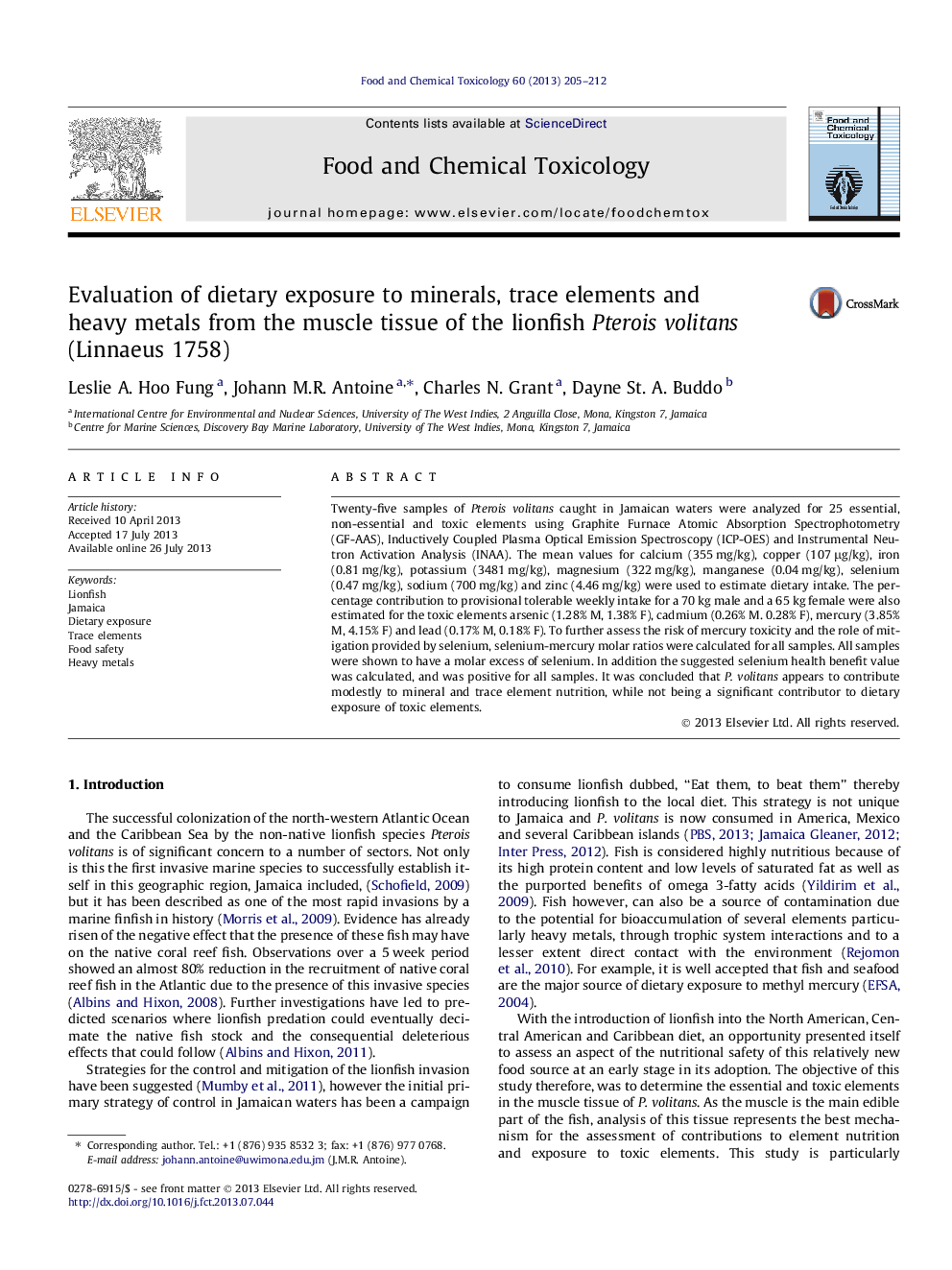| Article ID | Journal | Published Year | Pages | File Type |
|---|---|---|---|---|
| 2585105 | Food and Chemical Toxicology | 2013 | 8 Pages |
•The muscle tissue of Pterois volitans was analysed for 25 elements.•Dietary exposure estimates were calculated for essential and toxic elements.•The muscle tissue analyzed were low in As, Cd, Hg and Pb.•Se was found to be in molar excess of Hg in the lionfish muscle tissue.•The consumption of lionfish appears to be safe from an elemental standpoint.
Twenty-five samples of Pterois volitans caught in Jamaican waters were analyzed for 25 essential, non-essential and toxic elements using Graphite Furnace Atomic Absorption Spectrophotometry (GF-AAS), Inductively Coupled Plasma Optical Emission Spectroscopy (ICP-OES) and Instrumental Neutron Activation Analysis (INAA). The mean values for calcium (355 mg/kg), copper (107 μg/kg), iron (0.81 mg/kg), potassium (3481 mg/kg), magnesium (322 mg/kg), manganese (0.04 mg/kg), selenium (0.47 mg/kg), sodium (700 mg/kg) and zinc (4.46 mg/kg) were used to estimate dietary intake. The percentage contribution to provisional tolerable weekly intake for a 70 kg male and a 65 kg female were also estimated for the toxic elements arsenic (1.28% M, 1.38% F), cadmium (0.26% M. 0.28% F), mercury (3.85% M, 4.15% F) and lead (0.17% M, 0.18% F). To further assess the risk of mercury toxicity and the role of mitigation provided by selenium, selenium-mercury molar ratios were calculated for all samples. All samples were shown to have a molar excess of selenium. In addition the suggested selenium health benefit value was calculated, and was positive for all samples. It was concluded that P. volitans appears to contribute modestly to mineral and trace element nutrition, while not being a significant contributor to dietary exposure of toxic elements.
